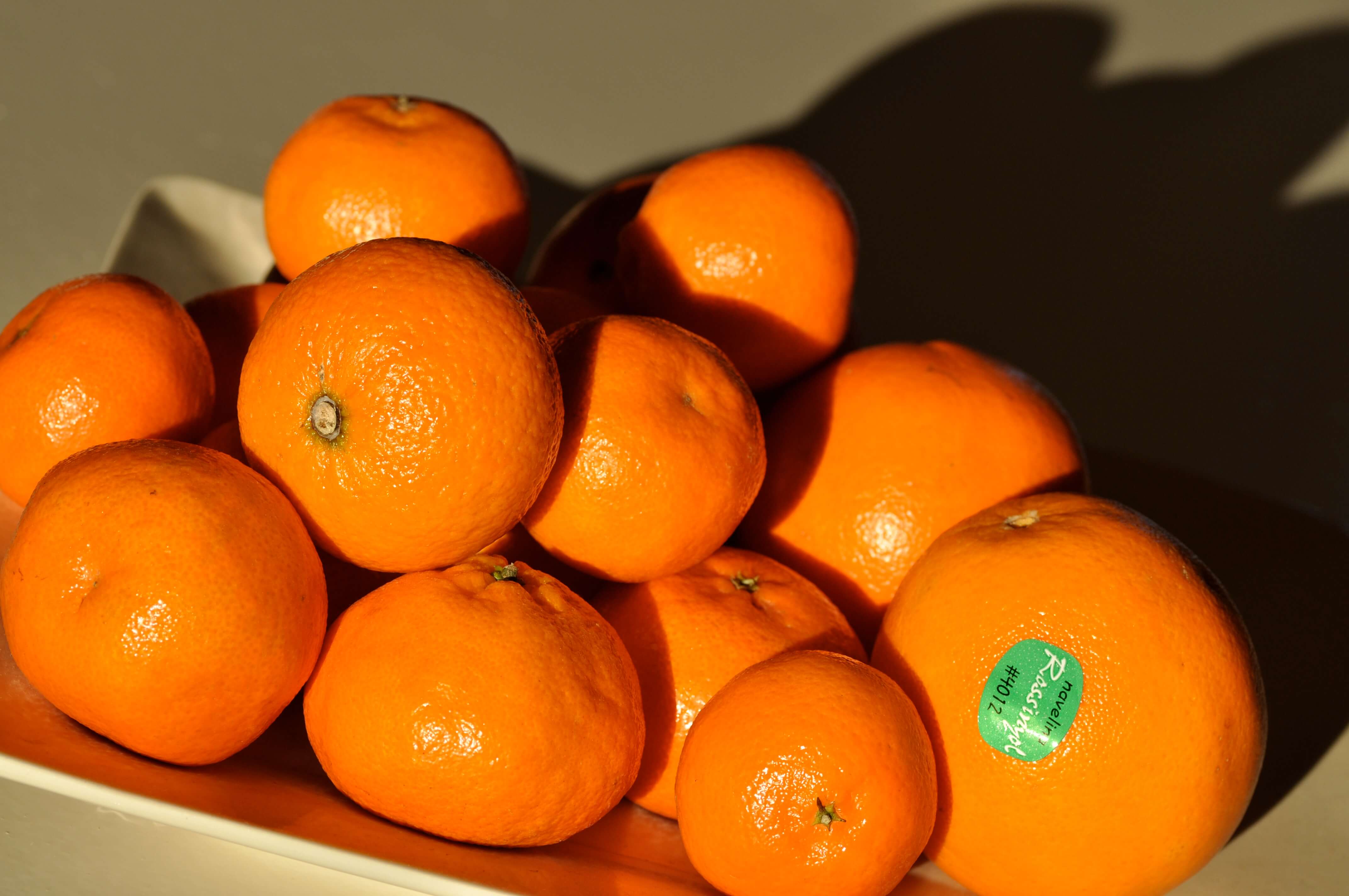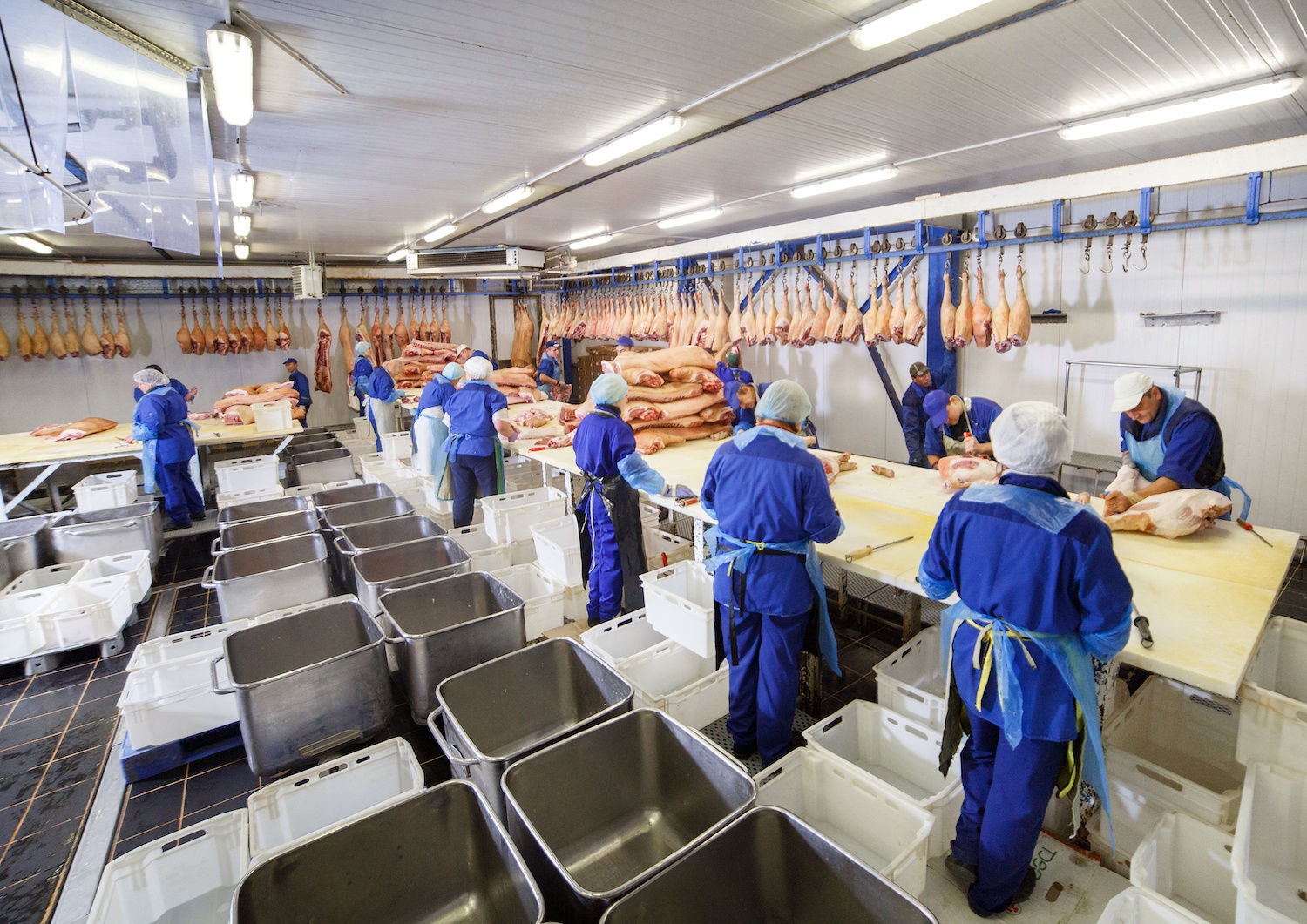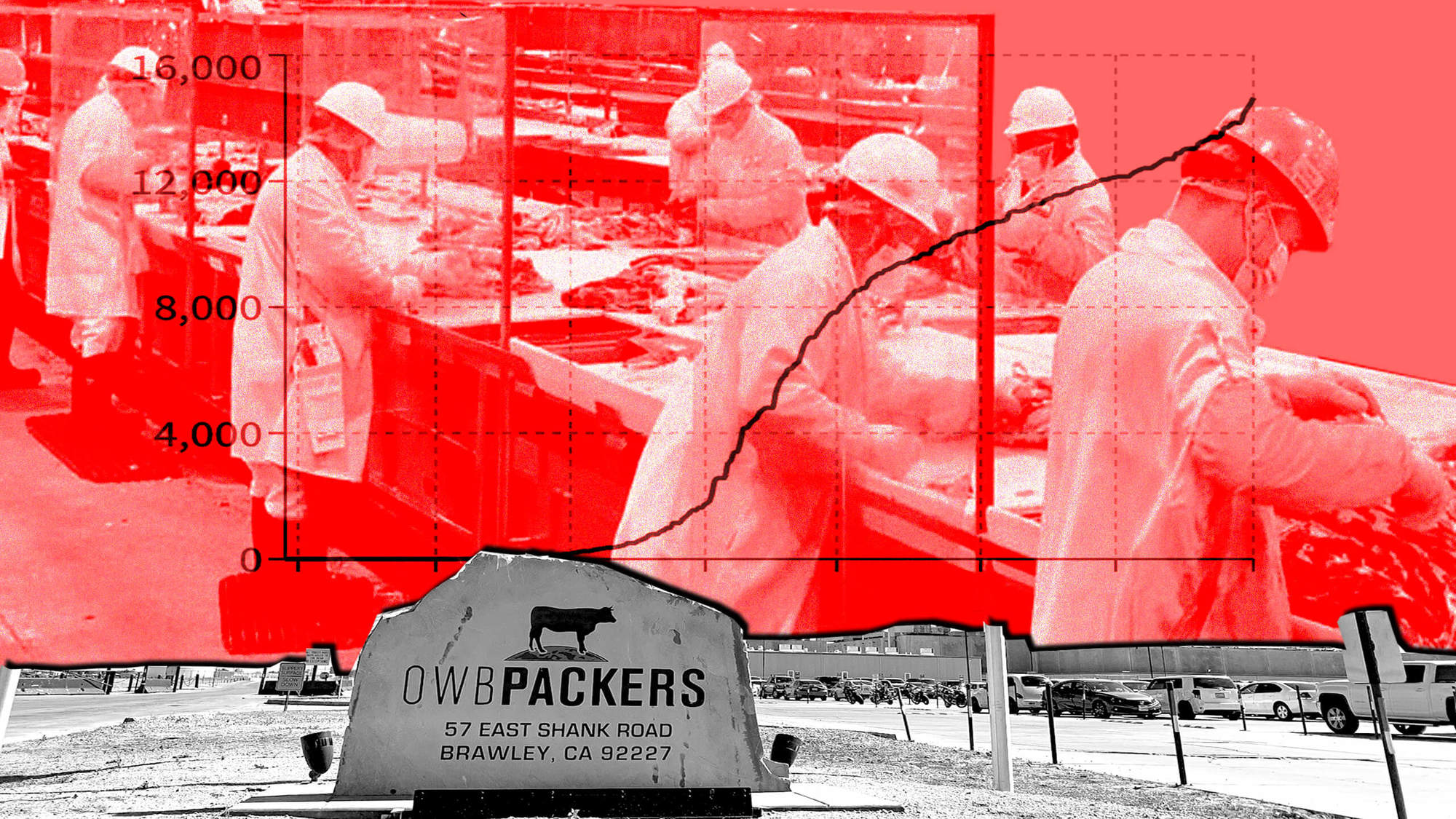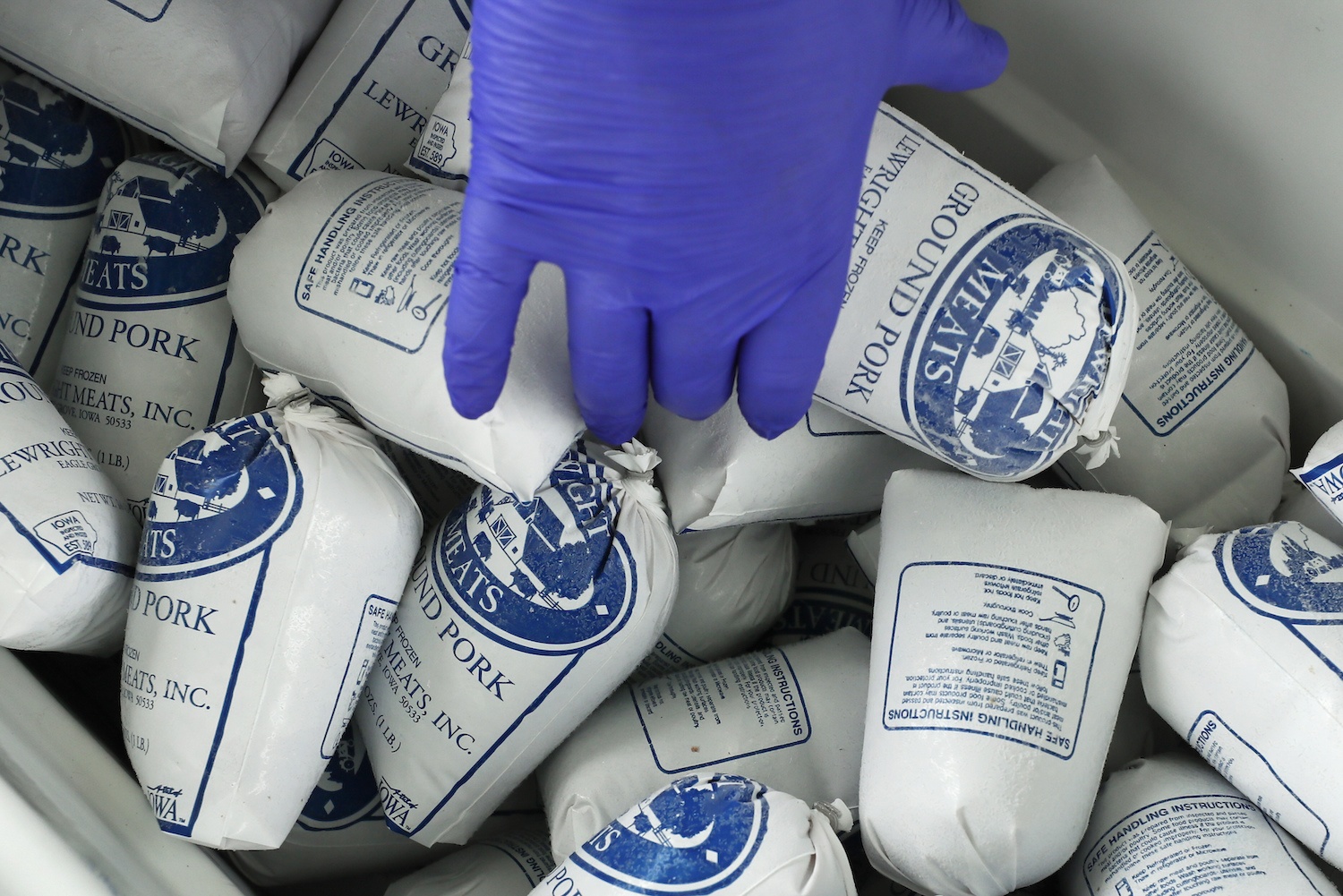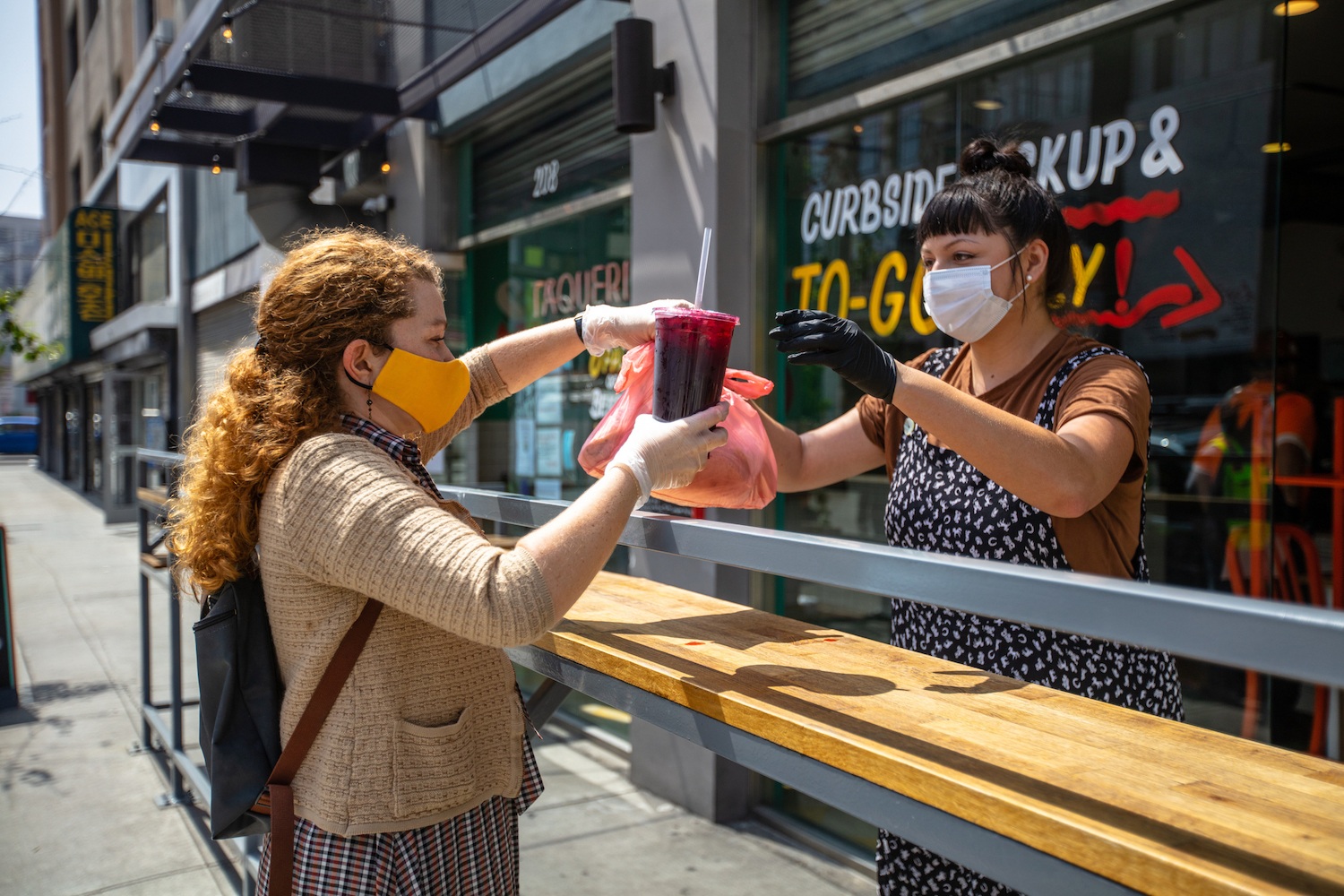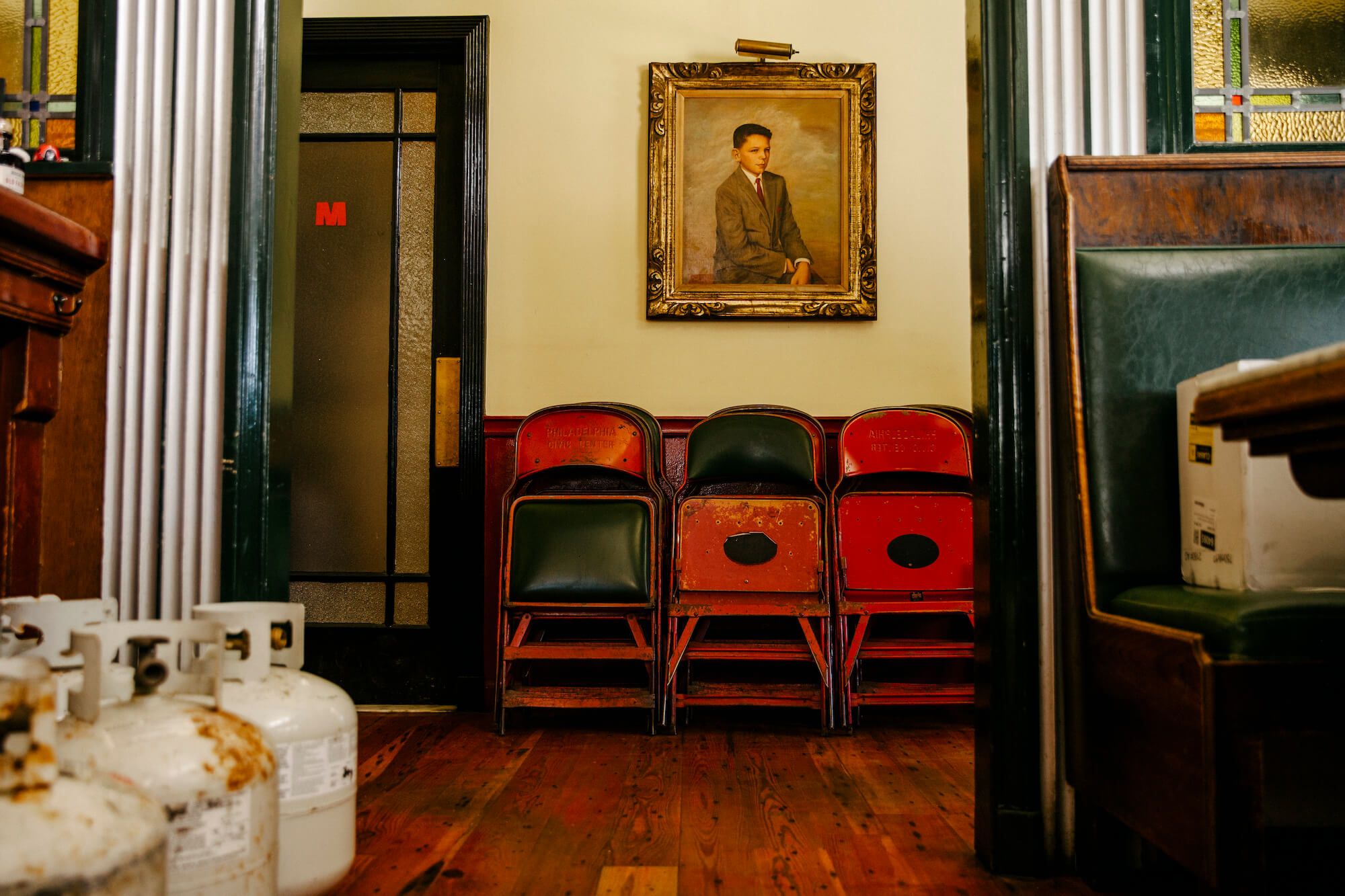
iStock / Softulka
For food professionals, not being able to taste or enjoy what they cook magnifies fears about their livelihoods.
Last July, Justin Burke was watering plants in his Columbia, South Carolina backyard when he began feeling symptoms of Covid-19, days after many of his family members fell ill.
“It was a full body shutdown. I got super sweaty, dizzy, shortness of breath—it all just kind of happened at once,” he said.
For several days, he slipped in and out of consciousness at home. The hospital, which was nearing capacity, told him not to come in unless he stopped breathing. “They were like, well, ‘You should recover—you’re a healthy, athletic marathon runner,’” he said. “I’m like, ‘Cool, I feel like I’m dying.’”
When the most severe symptoms began to abate, Burke noticed something wrong with his senses. He had eaten little during the week in bed, losing 15 pounds and paying more attention to the pulsating pain in his body than his perception of smell and taste. Then one evening, as his boyfriend made dinner, Burke realized he couldn’t smell anything—not the garlic, not the onions, not the searing beef. He thought, “This is really weird. I see it, but I can’t tell it’s happening through my senses.”

Justin Burke, a former pastry chef in Columbia, South Carolina, lost his sense of smell through Covid-19-related anosmia and experienced continued taste distortions from another condition. But he regained much of his ability to taste during Thanksgiving week.
Carter Short Photography
As he chewed, the meat tasted metallic. The vegetables seemed rancid. He couldn’t detect the garlic in the rice. “Everything was just off,” he added. Having recently left an executive pastry chef post at acclaimed North Carolina restaurants Kindred and Hello, Sailor to pursue a career in writing and recipe development, Burke had prided himself on his ability to detect a quarter teaspoon of an uncommon spice in a dish.
Anosmia or the loss of smell is one of the most common symptoms of Covid-19. It affects an estimated 80 percent of people who contract the virus. The majority recover in a week or two, but some who were sickened in March and April have yet to regain the sense. In May, Clare Hopkins, the ear, nose, and throat surgeon who pushed for the recognition of anosmia as a Covid-19 symptom, said about 10 percent of patients experience ongoing smell loss, estimating that 100,000 patients in the United Kingdom (where she is based) would experience long-lasting anosmia. Though there are no clear estimates of prevalence in the United States, doctors here have begun paying closer attention to the issue, raising concerns about anosmia’s impact on nutrition and mental health.
Other, stranger symptoms may persist. Coffee will suddenly be undrinkable, smelling like rubber or gasoline. Browning meat can reek of smoke. Just about everything will seem to emit a garbage-pail odor. And then, the really weird thing: Human feces can actually smell quite nice, like flowers or at least “better than coffee.”
Chefs and bakers rely on their palates to fine-tune recipes and taste-test dishes, and without a sense of smell, those tasks are almost impossible.
The sensory distortions Burke was feeling were the result of a condition called parosmia, which often follows or occurs at the same time as anosmia. Scientists believe that parosmia is a symptom of the brain’s healing process: As neurons regrow, wires get crossed, sending the wrong signals to the brain.
[Subscribe to our 2x-weekly newsletter and never miss a story.]
Some parosmics report feeling unable to shower because the water smells so bad. Others can only eat bland foods, raw ones, or familiar dishes. Meals will either taste disgusting or like nothing at all. Facebook groups have sprung up to opine on various parosmia “triggers”—including the Maillard reaction, the chemical reaction that gives browning meat or roasting coffee their char—and swap tips about which brands of grocery-store staples are less offensive than others.
So far, though, the only real cure is time. Scientists still understand little about parosmia and how to stop it.
“The simple pleasure of eating or smelling something—it feeds into your mental health and wellness. And if that’s declining, there’s no opportunity for you to recover from the other symptoms because it’s just manifesting into the spiral of darkness.”
A few weeks after he began getting out of bed, Burke was still feeling fatigued and suffering from migraines. His vision declined and he couldn’t sleep. His sense of smell remained faded and distorted, though he could taste salt and sugar. He began to wonder if he was a “long hauler,” a Covid-19 survivor who experiences persistent symptoms.
For those who work in the food industry, lingering anosmia and parosmia can be particularly debilitating. Chefs and bakers rely on their palates to fine-tune recipes and taste-test dishes, and without a sense of smell, those tasks are almost impossible. While it’s not yet clear whether Covid-19-related anosmia is ever permanent, the unknowns add a layer of anxiety to the equation. Several food industry professionals I interviewed for this story described smelling everything in the kitchen many times a day just to see if anything had changed.
“Yes, I’m very grateful I’m alive, but there are all these things that are happening to us afterwards that are still traumatic and life-altering,” Burke said. “The simple pleasure of eating or smelling something—it feeds into your mental health and wellness. And if that’s declining, there’s no opportunity for you to recover from the other symptoms because it’s just manifesting into the spiral of darkness.”
When tasting is your job
For Burke, the ongoing inability to smell and taste meant he fell behind on work. During the pandemic, his freelancing work had picked up as publications sought out recipes for home cooks. He had been shopping around a cookbook proposal. All of that ground to a halt.
“I couldn’t even get myself motivated to go into the kitchen,” he said. “I didn’t trust my palate or my body or my mind, honestly,” he added. He worried his career was over.
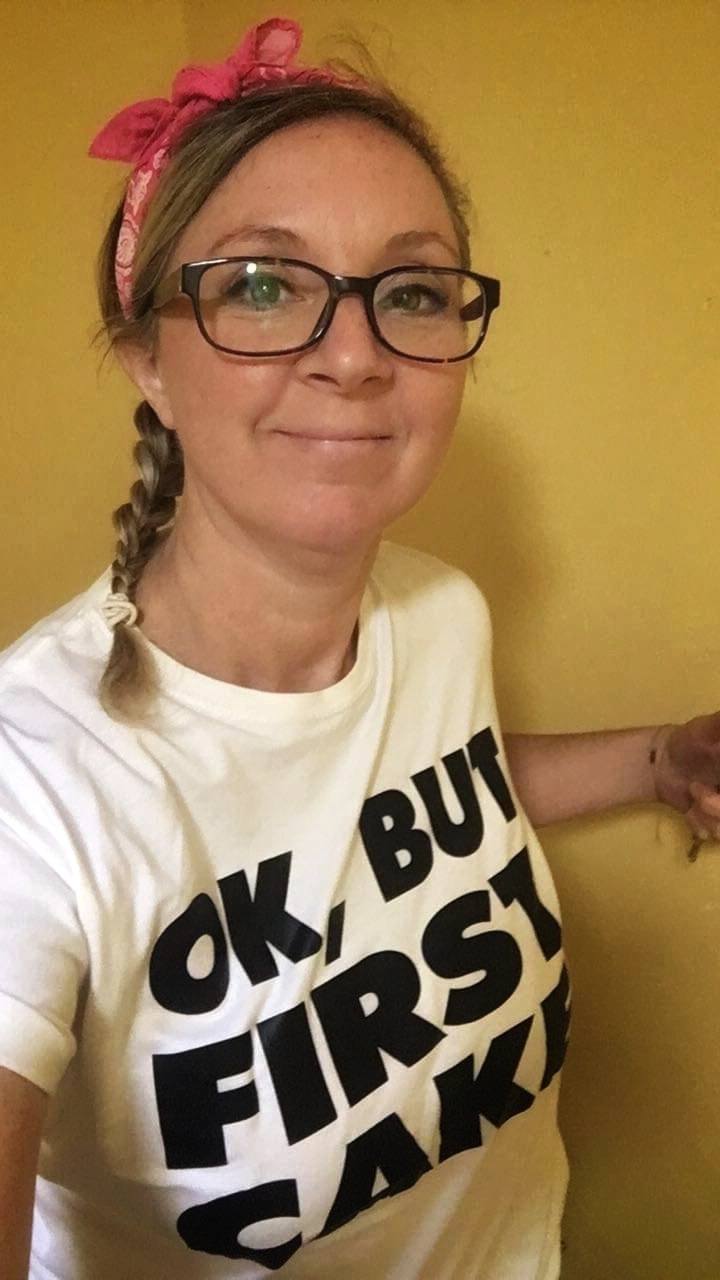
Filitsa Gray
Filitsa Gray, owner of a vegan baking business in London, lost her sense of smell and has found it difficult to develop new recipes.
Filitsa Gray runs a vegan baking business from her London home. Almost three years ago, she quit her job to bake full-time. Things were going well: She’d built a loyal customer base, and she loved what she did.
“As a baker, you get that nice homey feeling when you’ve got fresh cookies. That smell of chocolate coming out of the oven—it’s almost better for me than eating the hot cookie,” she said.
She lost her sense of smell earlier this year. Then, on July 26, it came back all at once, albeit “really weird. All my food tasted like plastic bags,” she said. At first, she continued to cook, following her recipes closely and relying on her boyfriend to taste her bakes. Then she began Googling her symptoms. Parosmia wasn’t yet a verified symptom of Covid-19, but she found a Facebook group run by the charity AbScent that lent a name to the condition. “I had a mini-breakdown because I was like, ‘Oh my God. I can’t deal with this for 15 years,’” as her mother once had.
Since the parosmia began, she’s been eating vegan cheese sandwiches two or three times a day because they’re one of the only foods that don’t trigger her symptoms. She buys white bake-at-home baguettes and half-bakes them for five minutes; any longer in the oven and they start to brown, the beginning of the Maillard reaction, one of the most commonly reported parosmia triggers. “If you burn toast and scrape all the black char off the toast, then throw that toast back in the wooden fire and put burnt toffee sauce on the top, that’s what it tastes like,” she said.
The parosmia has affected her professionally, too. She finds it difficult to develop new recipes. She tested most of the dozen treats she included in her Christmas boxes “blind,” reminding herself that apples don’t taste like soap to everyone. She struggles with whether to tell her clients what has happened to her.
A survey by Fifth Sense, a U.K. charity for people with smell and taste disorders, found that nearly 57 percent of people suffering from anosmia or parosmia report feeling isolated because of their condition. More than 40 percent report feeling depression, and 92 percent of respondents say their condition has negatively affected their appreciation of food and drink.
“Depression and olfactory function go hand in hand,” said Dr. Jane Parker, a flavor chemist at the University of Reading in England. “If you’ve got no olfactory function, you get depressed. But if you get depressed, your olfactory function is diminished. They are very intertwined,” she said.
For the time being, Gray is focusing on the positive. She’s paying extra attention to the decorations on her cakes and cookies, adding even more visual and textural appeal to her work. She’s developing bake-at-home and decorate-at-home boxes for customers stuck in lockdown. She sold out of Christmas treat boxes twice, even though she couldn’t enjoy them herself.
“Every day, you have to keep trying and moving forward and hoping this won’t last forever,” she said. “When you concentrate on what you can’t eat, that’s when you start getting sad, getting down into a deep hole.”
The parosmia test
At The Flavour Centre, a University of Reading lab outside of London, flavor chemist Jane Parker directs study participants toward a machine that looks a little like an oven with a hose snaking out of it and a nose piece on the end. Before the pandemic began, Parker suspected parosmia might be triggered by specific chemical compounds, so she began inviting parosmics to undergo a series of tests.
The machine that tests parosmics is a gas chromatograph. Food writer and Nose Dive author Harold McGee compares the machine to a still. As the chromatograph heats samples—in Parker’s tests, usually coffee—it pipes individual groups of molecules through the hose. The study participant on the other end of the line experiences each emission as a different aroma, rather like the individual ingredients in a recipe.
Over the course of a session, the gas chromatograph might release a new aroma every few seconds.
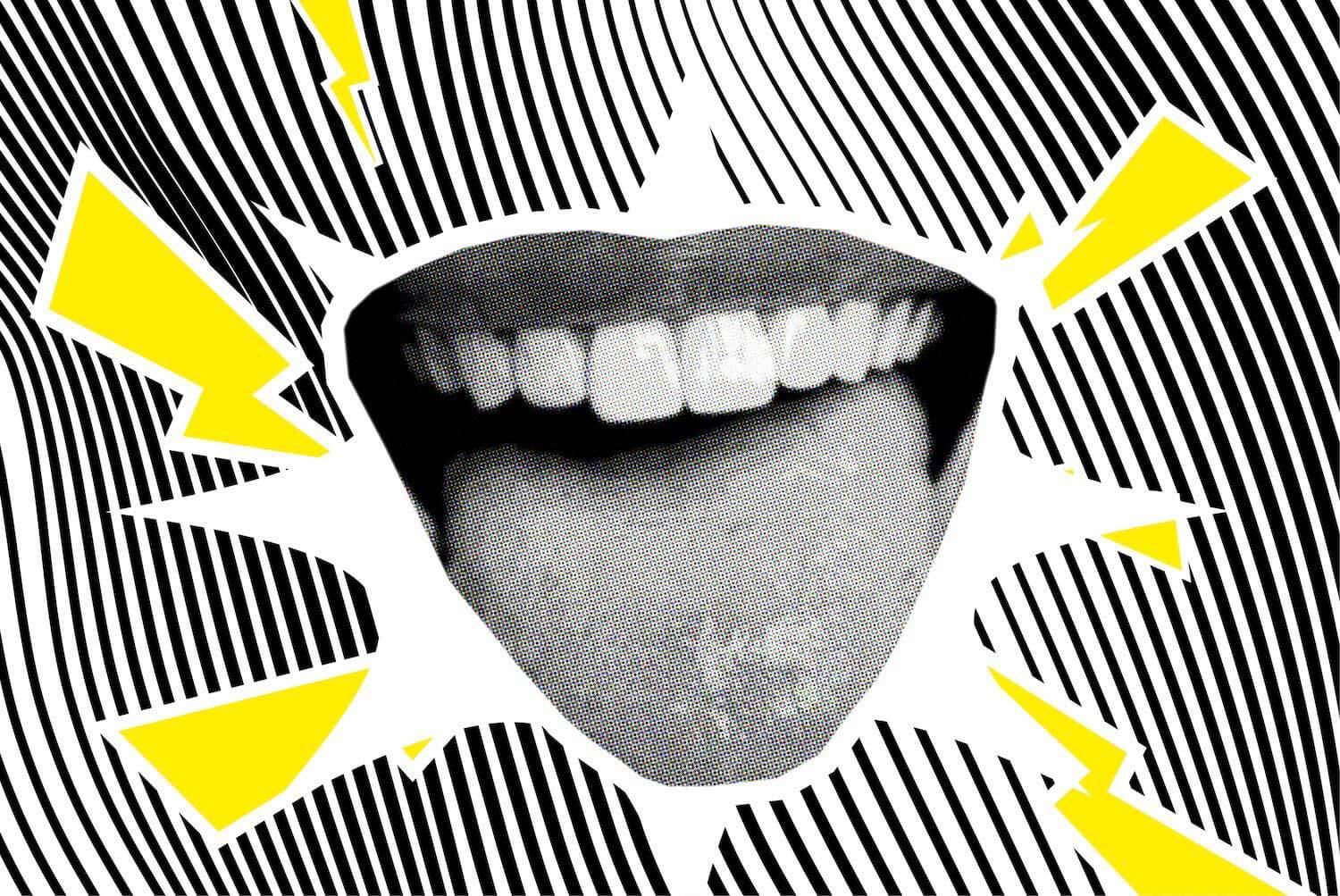
It’s a common misconception that we perceive flavor solely through our mouth. In fact, the taste buds are only good for a few basic tastes: sweet, salty, bitter, sour, umami (and maybe fat).
iStock / Softulka / Deagreez
“For the untrained, it’s a high-anxiety ride that reminded me of Lucille Ball not keeping up on the candy assembly line,” McGee wrote of his experience with the contraption. “During the half-hour run of a sample of fried ground beef, I hit the detection button around 80 times and was confident of my description for maybe 10 or 20.”
For the parosmics in Parker’s study, the task is even more difficult. “The person would recognize some of [the aromas], but most of them they didn’t recognize because the parosmic ones were distorted,” Parker said. Compounds that would normally smell pleasant or at least familiar would take on an entirely different character. Some parosmics have no words for the compounds that smelled off. In Parker’s tests, they’ve labeled parosmia smells with numbers: one, two, three.
It’s a common misconception that we perceive flavor solely through our mouth. In fact, the taste buds are only good for a few basic tastes: sweet, salty, bitter, sour, umami (and maybe fat, though the research is still out). Nina Bleasdale, director of development and operations at Fifth Sense, tells acquaintances to imagine holding their nose while eating in order to understand the difference between taste and flavor. With your nose blocked, you might pick up the tang of a salad dressing or the saltiness of a wedge of Parmesan, but you wouldn’t perceive the more complex flavors that separate balsamic vinegar from lime juice. Anosmics often describe eating a lot of candy, oversalting their food, or adding a ton of hot sauce to a dish—overcompensating for the loss of more complex flavors.
In parosmia, the neurons “don’t know where they’re going, and there might be some blockages. So actually they all get attached onto the wrong place, and your brain can’t tell what’s going on.”
We smell things when we breathe in through our noses, but we also smell things when we breathe in through our mouths. In reality, flavor perception is a combination of taste and smell.
At the top of the nose are nerve endings that pick up scent signals, Parker explains. Each neuron receptor picks up one molecule or a handful of molecules. From the back of the nose, neurons thread into the brain.
For patients with anosmia and parosmia, something goes wrong along that path. Scientists are still working to pinpoint exactly how Covid-19 impacts the olfactory system, but a research team led by David H. Brann at Harvard has theorized that Covid-19 affects the cells that support olfactory neurons—not the neurons themselves—and that’s why anosmia often clears quickly as the patient heals. For people with anosmia that lasts much longer, the infection may somehow damage the olfactory neurons.
Parosmia is a bit more perplexing. The going theory, Parker explained, is that as damaged nerves start to regrow, they get lost somewhere between the nose and the brain. At some point in the process, the wires literally cross: A strawberry-detecting neuron might plug into a trash juice-processing bulb, or a poop molecule might hit a receptor that somehow processes it as clean laundry. The neurons “don’t know where they’re going, and there might be some blockages,” Parker said. “So actually they all get attached onto the wrong place, and your brain can’t tell what’s going on.”
If Parker can identify the specific compounds that consistently trigger parosmic reactions, maybe later a neuroscientist can pick up where she leaves off, untangling the mystery of why certain neurons seem to get lost in translation. Eventually, collaborative efforts might coalesce into something that so far has remained elusive: a cure.
The pain of sensory loss, the joy of sensory return
Nick C. DiSciscio was building up a new base of clients as a private chef in the Boston area when the pandemic hit, slamming the door on opportunities to cater events and special dinners. He lost his sense of smell soon after. And when it began coming back, everything smelled musty. “It was very disconcerting. I didn’t know what it was at all,” he said. Eventually, he visited a specialist and took a smell test. “I got a 14 out of 40, which isn’t very good.”
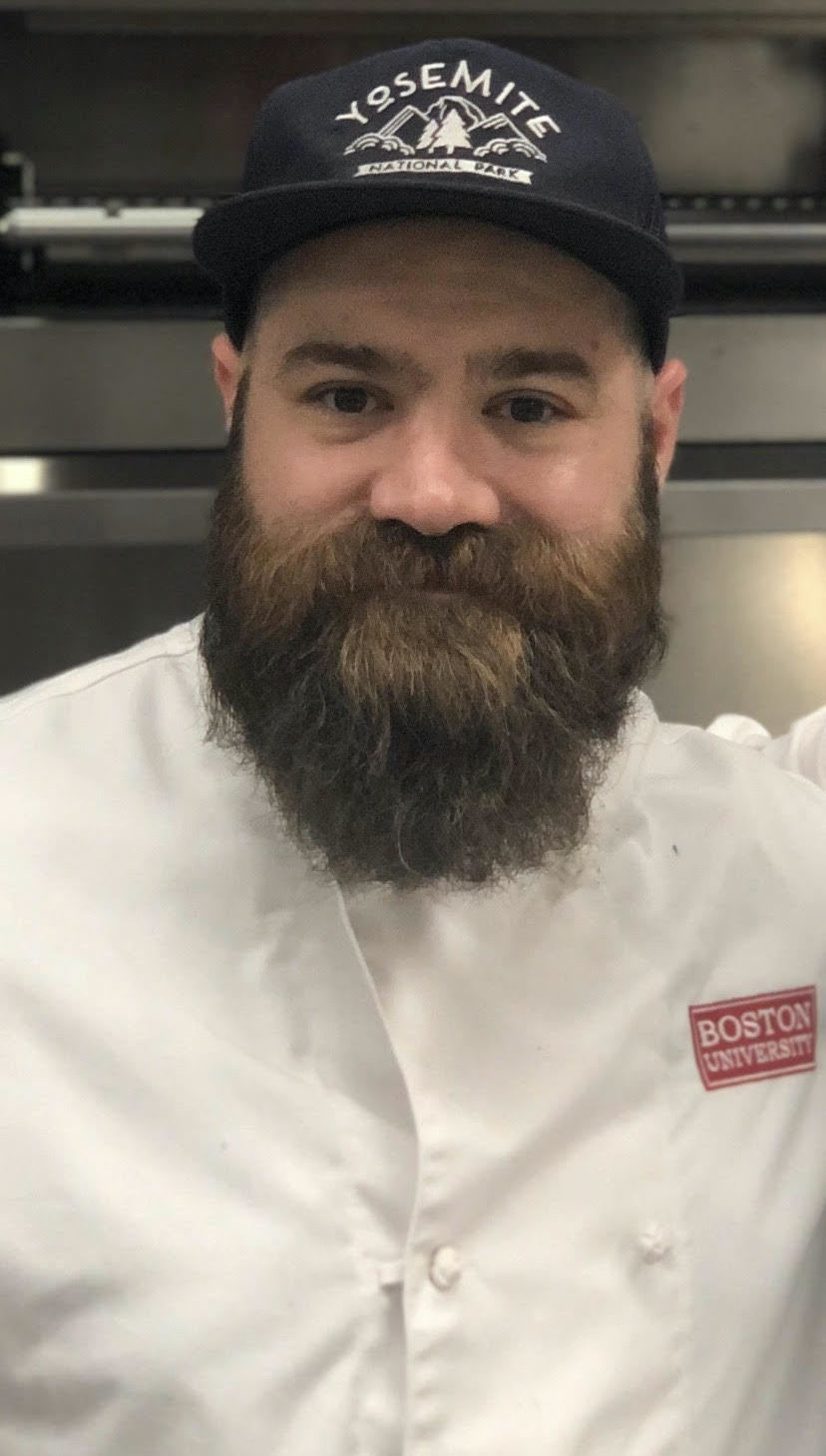
courtesy of Nicholas DiSciscio
Nick C. DiSciscio was building up a base of clients for his private chef business in Boston when the pandemic hit and soon after lost his sense of smell.
He joined a Facebook group run by the British charity AbScent and learned that others were experimenting with smell training, one of the only recommended treatments for parosmia and anosmia. He began keeping a collection of essential oils on his coffee table. As the months went by, their number swelled from four to 25. Each day, morning and night and sometimes a third time, he’d inhale each scent for 15 seconds. At first, not much happened. But then he’d catch a whiff of smoke, or he’d be able to smell the eucalyptus oil as soon as he uncapped the bottle.
“When it’s starting to come back, it’s really quite an emotional experience,” he said. The smell training helped him perceive more scent when he stepped away from the oils, too. “I cooked steak last night, and I didn’t get that aroma of the Maillard reaction when it was cooking in the cast iron pan. But then I made a pan sauce with mustard and I could taste that.”
Though smell training remains a largely unproven therapy for parosmia and anosmia, the smelling exercises may stimulate the olfactory system, encouraging it to heal. Anosmics who practice over the course of 12 weeks perform a little better on objective tests than those who don’t, Parker said, though the most important component of the healing process is time. Still, the mental health impacts of smell training may be just as important as the neurological stimulation.
“I cooked steak last night, and I didn’t get that aroma of the Maillard reaction when it was cooking in the cast iron pan. But then I made a pan sauce with mustard and I could taste that.”
“You need support to stop your mental health declining, really, because it can be distressing, and smell training helps with the mental health aspect,” Parker said. “You’re doing something positive.”
Some anosmics report happy moments correlating with a heightened sense of smell. When it became clear that Joe Biden had won the presidential election, DiSciscio, an enthusiastic supporter, popped open a bottle of Prosecco. A former bartender, he hadn’t enjoyed alcohol since he began experiencing parosmia. In that moment, though, he could smell the drink. “Mood has a lot to do with it,” he said.
Despite glimmers of hope, smell training can be a long and discouraging process, and informal support networks have sprung up for people navigating the sudden loss of smell. It was 8:00 a.m., on a cold November morning in New York and 1:00 p.m., in London when a few dozen participants logged into Zoom from all over the world for #LetsTalkSmellAndTaste, a series of lunchtime conversations organized by Fifth Sense. The organizer, Tom Laughton, patiently greeted each participant, imploring everyone to turn their cameras on.
One by one, people shared how they lost their smell: Many have suffered head injuries. Others had Covid-19. A few have no idea how it happened. At least one person was born anosmic; many have been suffering for years. (The Counter agreed not to use names from group participants at Fifth Sense’s request.)
“When we have a big problem, we want to minimize it and talk about what we do about it. And I just want to separate those out,” said Laughton, encouraging participants not to skip ahead to sharing tips and accommodations. “This is a chance just to talk about: What has been the impact? What does it mean?”
One by one, attendees used words like “immeasurable” and “devastating” to describe the impact of losing their sense of smell. People I interviewed for this story echoed similar sentiments: They talked about the strange moments where they felt jealous of partners who complained about the acrid smell of cat litter or worrying they’d be known as the mom who was a “shit cook.” One portrait artist who lost all sense of smell after a mild case of Covid-19 said she felt like the world had no color.
“I come across a lot of people who say ‘I’m used to it.’ The reality is, though, that state is often a papering over of the cracks, a moving away from the loss. That can take a lot of energy to hold together, though, and we leave parts of ourselves behind too.”
“I come across a lot of people who say ‘I’m used to it,’” wrote Laughton in a follow-up email, adding that many people believe they have “recovered” before they have processed their loss. Laughton lost most of his taste and smell in the early 1990s. “The reality is, though, that state is often a papering over of the cracks, a moving away from the loss. That can take a lot of energy to hold together, though, and we leave parts of ourselves behind too,” he added. “The best way out of it is through it, and through it there is a different state out the other side.”
Perhaps one of the reasons it’s so hard to make sense of a loss of smell is because smell itself is so ephemeral. Paintings and photos memorialize the visual world; recordings and sheet music summon auditory memories. Much has been written about the neurological links between smell and emotion, but researchers understand less about how a lack of smell might influence our understanding of the world. Though a small but burgeoning academic field has sprung up around the history of smell, anosmia and parosmia have yet to become mainstream issues in academia or medicine.
“We know something about how deaf studies intersects with sound studies, but what would a history of anosmia—the inability to smell—look like?” asked Mark M. Smith, editor of Smell and History: A Reader, in his introduction.
For many, the focus has shifted to coping strategies: concentrating on texture instead of taste or asking a dinner companion to choose their meal, mindful of the joy a surprise might bring.
For now, we’re left with whiffs here and there. In fact, many of the interviewed anosmics and parosmics said that whiffs were what kept them going: a sip of tea that tastes faintly of ginger after weeks of going through the motions, a moment when cilantro smells normal after months of rancidity. Two also reported being able to smell in their dreams.
To celebrate milestones, DiSciscio has kept a smell journal recording only positive moments. Others have tried oral steroids, vitamins, and eliminating dairy. For many, the focus has shifted to coping strategies: concentrating on texture instead of taste or asking a dinner companion to choose their meal, mindful of the joy a surprise might bring. Still more remain hopeful that smells will return soon, and each day is still a waiting game.
Covid-19 related anosmia and parosmia is still a relatively new phenomenon, and it remains unclear how many people will one day recover.
“I’m just ordering off of knowing I’m not actually going to enjoy this, but it’s the actual act of doing it I’ll get pleasure from.”
Justin Burke, the pastry chef-turned-writer, got his taste back all at once. It was the week of Thanksgiving, and he was in West Virginia visiting his boyfriend’s family. He ordered sesame chicken and egg rolls at a Chinese takeout restaurant.
“I’m just ordering off of knowing I’m not actually going to enjoy this, but it’s the actual act of doing it I’ll get pleasure from,” he said.
At first, the sesame chicken tasted really spicy. It struck him as odd—sesame chicken isn’t typically a spicy dish—but he chalked it up to the restaurant’s recipe.
Then he tried an egg roll. Same thing. “My mouth is on fire and I’m sweating,” he recalled thinking, as he passed it to his boyfriend, who said it tasted normal.
“I’m pushing myself creatively to return to what I used to love.”
“Then I’m like, the carrots and cabbage are really good—and what did they roll this egg roll in? Because it’s got a delicious powder on it.”
He still hadn’t realized what was happening. “And then I’m like, hold up: I’m tasting everything. My taste buds were like, ‘Pump the brakes! This is too much for us!’” He felt as if he could taste each individual pepper granule.
“I’m so emotional, I’m crying, essentially,” he said. He hadn’t planned on cooking for Thanksgiving and he still had some lingering Covid-19 symptoms, but everything changed after the egg roll. Since that week, he’s started freelancing again. “I’m pushing myself creatively to return to what I used to love,” he said.
That day at the Chinese restaurant remains a turning point. “I was so energized. Our relationship is founded on cooking together,” Burke said. He began hatching plans to make pumpkin pie from scratch, reducing the puree to intensify the flavor. He would make a mushroom gravy, a green bean casserole. He and his boyfriend went to a donut shop and to get Italian subs.
“This is probably the shittiest Italian sub I’ve ever had in my life,” he thought. “But right now it tastes amazing!”
Correction, January 11, 2021: An earlier version of this story mistakenly used the term “strawberry-detecting molecule” when it should have said “strawberry-detecting neuron.” We regret the error.

